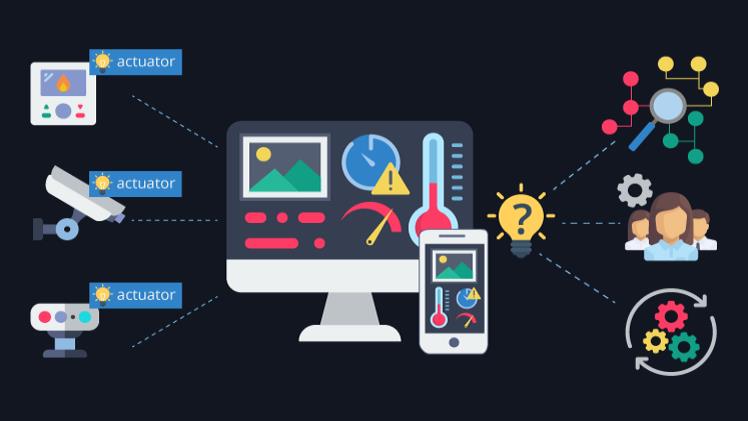One of the central findings from our sizing exercise is the importance of interoperability in generating maximum value from IoT applications. We estimate that situations in which two or more IoT systems must work together can account for about 40 percent of the total value that can be unlocked by the Internet of Things.8 In our estimation of IoT’s maximum potential, we have included the benefits of interoperability; without these benefits, the maximum value of the applications we size would be only about $7 trillion per year in 2025, rather than $11.1 trillion (Exhibit 2). Some of the largest benefits of interoperability might be realized in the worksites setting, where the percentage of total value requiring interoperability approaches 60 percent. This large potential reflects the complexity and interconnectedness of the equipment.
Much of the data collected by these sensors today is used to monitor discrete machines or systems. Individual equipment manufacturers collect performance data from their own machines and the data can be used to schedule maintenance. Interoperability would significantly improve performance by combining sensor data from different machines and systems to provide decision makers with an integrated view of performance across an entire factory or oil rig. Our research shows that more than half of the potential issues that can be identified by predictive analysis in such environments require data from multiple IoT systems. Oil and gas experts interviewed for this research estimate that interoperability.
Such a system would also need to take into account non-traffic data, such as weather reports. Aggregating and analyzing the data in a timely way—to reverse lanes on a highway to relieve congestion, for instance—requires smooth interaction among all the systems. In general, digital systems can be made interoperable in two broad ways—by creating widely accepted interface standards to provide a common language for different systems on a data network or through use of translation or aggregation systems (for example, middleware that lies between an operating system and applications).
Finally
While traditional Internet protocols have been widely adopted, the development and adoption of IoT standards is still in its early stages. Most IoT data collected are not used, and the data that are used are not fully exploited The potential value that we describe in Chapter 3 from IoT applications arises from how the data are analyzed and applied to decision making, improving operations, and enabling new lines of business. However, in most of the applications we evaluated, the data being generated are used in very limited ways. In one oil platform application we studied, less than 1 percent of the data being gathered were used, largely because most of the data were never transferred from the rig (Exhibit 3). IoT should be a key source of big data that can be analyzed to capture value, and open data, which can be used by more than one entity.10





